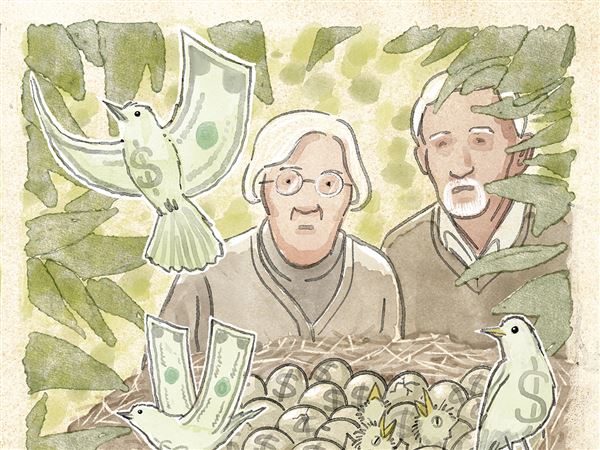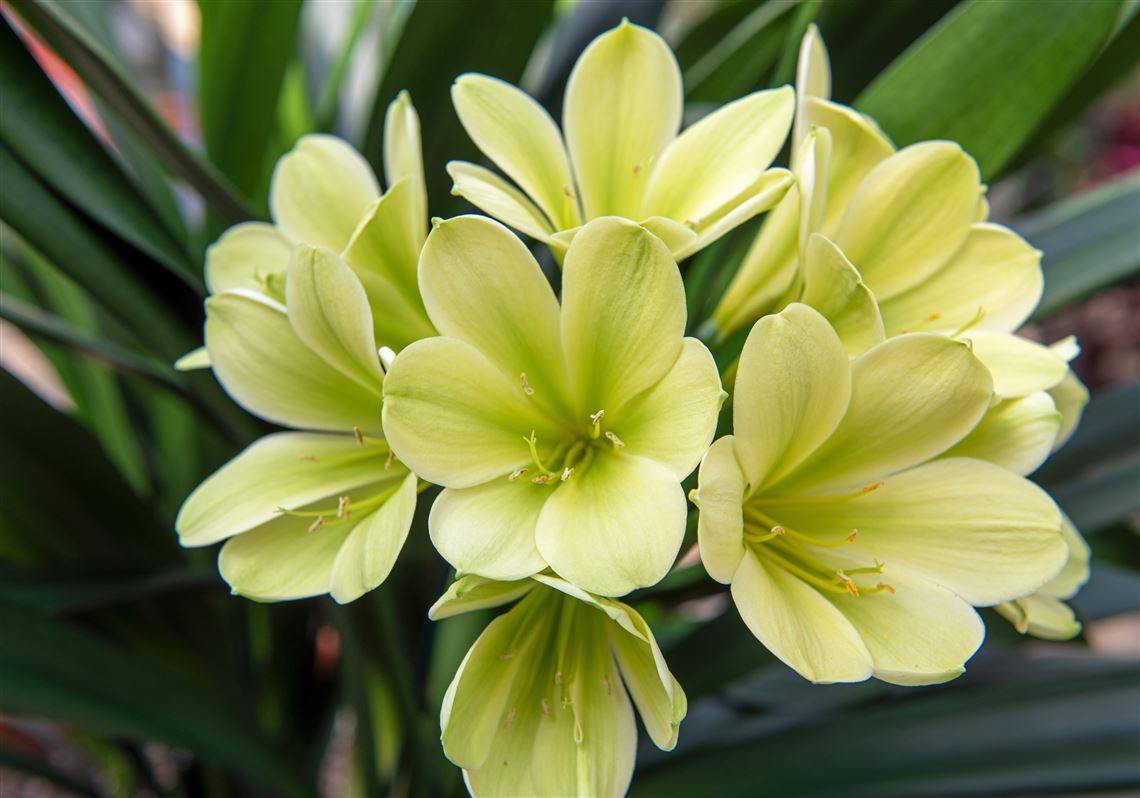Clivia miniata may be the perfect houseplant.
This cousin of the amaryllis doesn’t demand much — bright, indirect light, a little water, half-strength fertilizer in summer and a period of cool temperatures in winter. In return, a mature clivia features deep green strap-like leaves year-round and rewards you every spring with colorful, long-lasting clusters of up to 20 blossoms on a single stem.
But perfection comes at a price. The price of young plants ranges from $20 for the orange flowered species to hundreds of dollars for fancy cultivars. You’ll also need a little patience; it can take years for a clivia to grow 13 leaves, an indication that it’s mature enough to produce its stunning flowers. For your investment, you’ll get a beautiful plant with great longevity, up to 40 years.
Also known as bush lily, clivia is native to South Africa’s Eastern Cape woodlands. Orange is the most common color, but breeders are always trying to produce new shades. One of the world’s top breeders is Longwood Gardens in Kennett Square, Pa.
“In 1976, the goal was to produce a superior yellow-flowering plant,” said Ashley Clayton, Longwood’s research specialist. “Thirty-five years later, in 2011, we introduced ‘Longwood Debutante’, our first yellow-flowered clivia. Since then, we’ve introduced five additional Longwood cultivars, the most recent one in 2016. Their flower colors include yellow, red, salmon and green.”
Clivias are hardy in zones 9-11, which is why they are houseplants in Western Pennsylvania. At maturity, they are 2-3 feet high and wide. Since they require bright, indirect light, a north-facing or partially shaded east-facing window is ideal.
Longwood Gardens specialists say these plants prefer an airy, coarse, well-draining planting medium such as orchid mix or a potting mixture with extra perlite. It should be slightly acidic (pH 5.5-6.5). Terra cotta pots ensure good drainage and stability and clivias bloom best when pot-bound, even if roots appear at the soil surface.
When watering, keep plants on the dry side. Water only when the top 2-3 inches of the soil are dry. During the growing season, they prefer temperatures of 70-80 degrees. Apply half-strength, all-purpose fertilizer with every watering.
Each spring, your works will be rewarded with clusters of 12-20 blooms on a single stem that last 4-6 weeks. To prevent seed production, cut the stem just below the umbel (flower cluster) after blooming. Then, after the stem has dried, gently pull it from the plant. Remove withered and brown leaves. Dust the leaves as necessary.
From October through mid-January, place the potted plant in an area where the temperature is between 40 and 55 degrees (a basement, garage or attic). Do not water unless plants become extremely dry. Do not mist the leaves. Do not fertilize. Low light levels are fine.
Note: As a member of the amaryllis family, clivia may pose a toxic risk due to the presence of small amounts of lycorine, an alkaloid that is poisonous to pets and humans in large quantities.
Longwood Gardens’ propagation program has more than 500 plants in its greenhouse. It sells a limited number of its new introductions in its gift shop every March. You can view the Longwood Gardens’ clivia collection in its conservatory, at the Pierce du Pont House and at longwoodgardens.org.
Two other sources are White Flower Farm (whiteflowerfarm.com), which occasionally sells Longwood Gardens clivia, and Logee’s Greenhouse (www.logees.com).
Sources
• Longwood Gardens: longwoodgardens.org
• North American Clivia Society: northamericancliviasociety.org
• Clivia USA: cliviausa.com
• Clivia Society (South Africa): cliviasociety.com
Tricia Flinn is a Penn State Master Gardener. This volunteer program supports the outreach mission of Penn State Extension and provides research-based information on best practices in sustainable horticulture and environmental stewardship. Information: alleghenymg@psu.edu or 412-482-3476.
First Published: January 7, 2022, 11:00 a.m.















